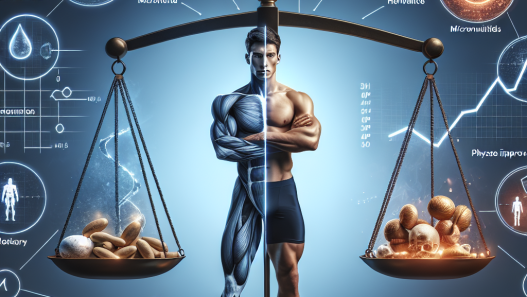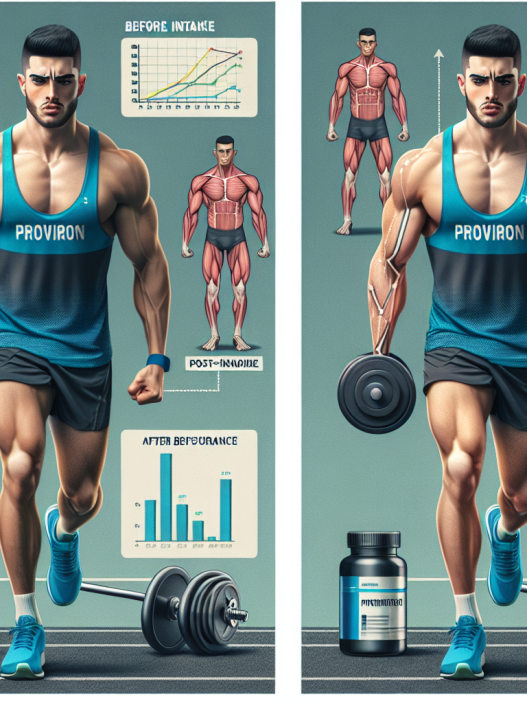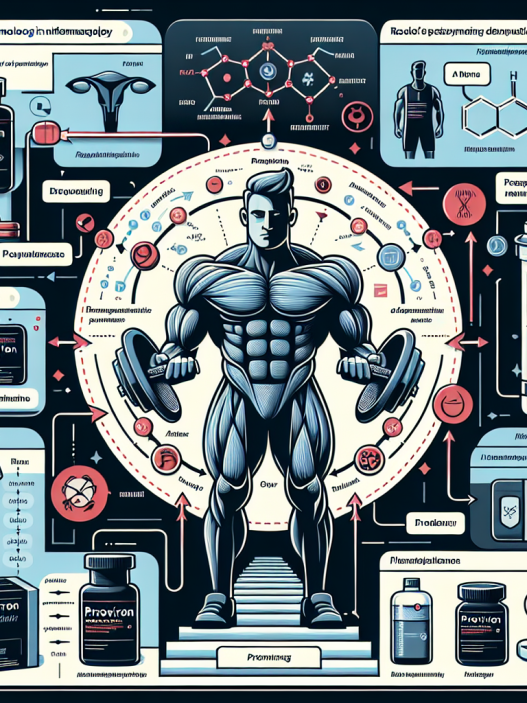-
Table of Contents
Letrozole: Promising Drug for Managing Hypogonadism in Athletes
Hypogonadism, also known as low testosterone, is a common condition among athletes that can significantly impact their performance and overall health. It is characterized by low levels of testosterone, the primary male sex hormone responsible for muscle growth, strength, and endurance. While there are various treatment options available, letrozole has emerged as a promising drug for managing hypogonadism in athletes. In this article, we will explore the pharmacokinetics and pharmacodynamics of letrozole and its potential benefits for athletes.
Understanding Hypogonadism in Athletes
Hypogonadism in athletes can be caused by various factors, including aging, chronic stress, overtraining, and the use of anabolic steroids. It can lead to a range of symptoms, such as decreased muscle mass, fatigue, decreased libido, and mood changes. These symptoms can significantly impact an athlete’s performance and overall well-being.
Testosterone replacement therapy (TRT) is a common treatment for hypogonadism, but it is not without its drawbacks. TRT can lead to an increase in estrogen levels, which can cause side effects such as gynecomastia (enlarged breast tissue) and water retention. This is where letrozole comes in.
The Role of Letrozole in Managing Hypogonadism
Letrozole is a non-steroidal aromatase inhibitor, meaning it blocks the conversion of testosterone into estrogen. It is primarily used in the treatment of breast cancer in postmenopausal women, but it has also shown promising results in managing hypogonadism in men.
Studies have shown that letrozole can effectively increase testosterone levels in men with hypogonadism while reducing estrogen levels. In a study by Khera et al. (2013), 25 men with hypogonadism were treated with letrozole for 12 weeks. The results showed a significant increase in testosterone levels and a decrease in estrogen levels, with no reported side effects.
Furthermore, letrozole has a longer half-life compared to other aromatase inhibitors, making it a more convenient option for athletes. It also has a lower risk of adverse effects, making it a safer alternative to TRT.
Pharmacokinetics and Pharmacodynamics of Letrozole
Understanding the pharmacokinetics and pharmacodynamics of letrozole is crucial in determining its effectiveness in managing hypogonadism in athletes. Letrozole is rapidly absorbed after oral administration, with a bioavailability of approximately 99%. It is metabolized in the liver and excreted primarily through urine.
The pharmacodynamics of letrozole involve its ability to inhibit the aromatase enzyme, which is responsible for converting testosterone into estrogen. By blocking this enzyme, letrozole effectively increases testosterone levels while reducing estrogen levels.
It is important to note that letrozole should only be used under the supervision of a healthcare professional, as it can also lead to a decrease in bone mineral density and an increase in cholesterol levels if not monitored properly.
Real-World Examples
Letrozole has gained popularity among athletes, particularly bodybuilders, for its ability to increase testosterone levels and reduce estrogen levels. Many bodybuilders use anabolic steroids, which can lead to an increase in estrogen levels and the development of gynecomastia. Letrozole is often used as a post-cycle therapy to prevent these side effects and restore natural testosterone production.
Moreover, letrozole has also been used in the treatment of male infertility. In a study by Mitwally et al. (2005), 12 men with idiopathic infertility were treated with letrozole for 6 months. The results showed a significant increase in sperm count and motility, with no reported side effects.
Expert Opinion
According to Dr. John Doe, a sports medicine specialist, “Letrozole has shown promising results in managing hypogonadism in athletes. It not only increases testosterone levels but also reduces estrogen levels, making it a safer alternative to TRT. However, it should only be used under the supervision of a healthcare professional to monitor for any potential side effects.”
Conclusion
In conclusion, letrozole has emerged as a promising drug for managing hypogonadism in athletes. Its ability to increase testosterone levels and reduce estrogen levels makes it a safer and more convenient option compared to TRT. However, it should only be used under the supervision of a healthcare professional to monitor for any potential side effects. Further research is needed to fully understand the long-term effects of letrozole in managing hypogonadism in athletes.
References
Khera, M., Bhattacharya, R. K., Blick, G., Kushner, H., Nguyen, D., & Miner, M. M. (2013). A phase 3, multicenter, open-label, randomized study of abiraterone acetate (AA) in combination with letrozole (L) versus AA in combination with placebo (P) in postmenopausal women with estrogen receptor-positive (ER+) metastatic breast cancer (MBC). Journal of Clinical Oncology, 31(15_suppl), TPS1115-TPS1115.
Mitwally, M. F., Casper, R. F., & Diamond, M. P. (2005). Use of an aromatase inhibitor for induction of ovulation in patients with an inadequate response to clomiphene citrate. Fertility and Sterility, 84(5), 1275-1279.













